#Kathleen Marie Rose
Explore tagged Tumblr posts
Text
7 novembre … ricordiamo …
7 novembre … ricordiamo … #semprevivineiricordi #nomidaricordare #personaggiimportanti #perfettamentechic
2022: Leslie Phillips, Leslie Samuel Phillips, attore britannico, conosciuto inizialmente solo come attore comico, più tardi ha iniziato ad interpretare ruoli caratteristici. La sua prima apparizione cinematografica risale agli anni trenta, quando era ancora un bambino. Dopo il suo matrimonio con Angela Scoular nel 1982, l’attore decise di dare una svolta alla sua carriera, abbandonando i lavori…
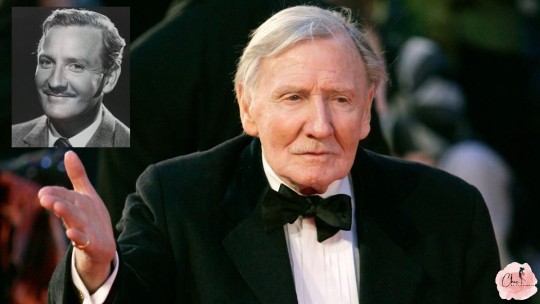
View On WordPress
#7 novembre#Beverly Scalzo#Brad Harris#Dean Stockwell#Dina Romano#Emilio Cardi Cigoli#Emilio Cigoli#Geltrude Ricci#Helene Ottilie Thimig#Helene Thimig#Henry Lehrman#Jack Kelly#Joan Whelan#John Augustus Kelly#Julie Gregg#Kathleen Marie Rose#Larry Kent#Leslie Phillips#Leslie Samuel Phillips#Morti 7 novembre#Rose Dolores#Steve McQueen#Tat&039;jana Pavlovna Pavlova#Tatiana Pavlova#Terence Steven McQueen#Tom Forman#Yelena Bondarchuk#Yelena Sergeyevna Bondarchuk
0 notes
Text

The Kennedy kids in 1925. From left to right: Eunice, Jack, Rosemary and Kick.
#Eunice Kennedy#Eunice Kennedy Shriver#Jack Kennedy#John F. Kennedy#Rosemary Kennedy#Rose Marie Kennedy#Kick Kennedy#Kathleen Kennedy Cavendish
52 notes
·
View notes
Photo
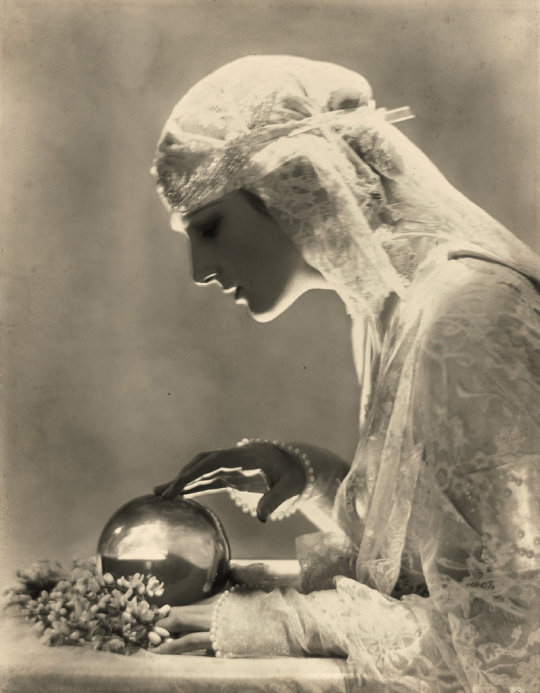
Dolores - 1919
Photo de Adolf de Meyer parue dans Vogue du 15 avril 1919
#Et pendant ce temps-là#Photographie de mode#Fashion photography#Mode#Fashion#Dolores#Kathleen Mary Rose#Adolf de Meyer#Vogue#1919
44 notes
·
View notes
Text

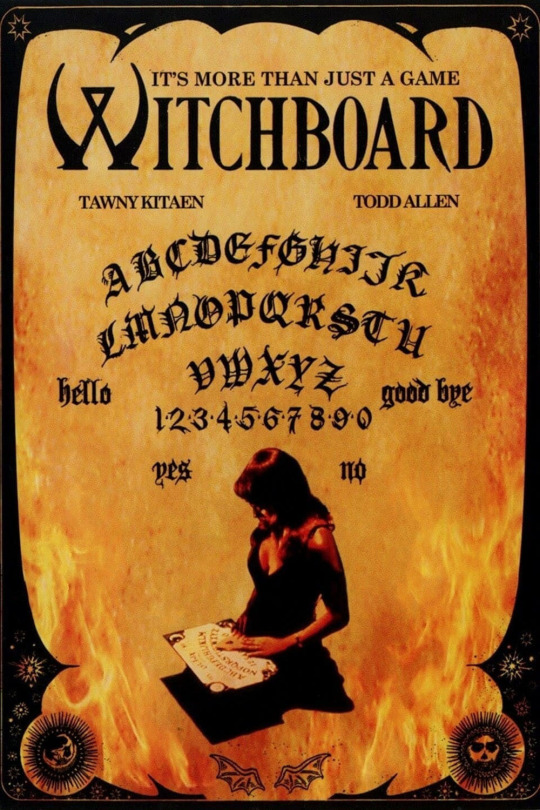
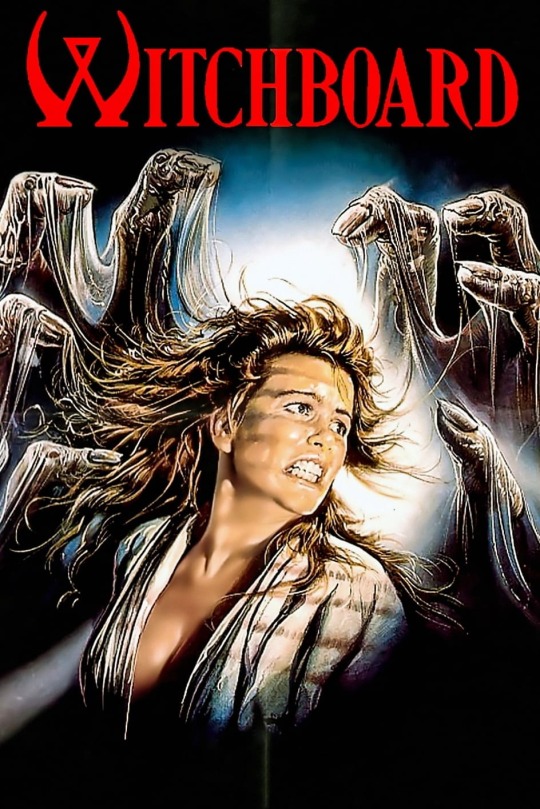

W A T C H I N G
#WITCHBOARD (1986)#Stephen Nichols#Tawny Kitaen#Todd Allen#Burke Byrnes#James W. Quinn#Rose Marie#Judy Tatum#Gloria Hayes#J.P. Luebsen#SUPERNATURAL HORROR#Ouija board#HORROR#Kathleen Wilhoite#Watching
2 notes
·
View notes
Text
'Lilli Schwenk Hornig was 23 years old when she arrived at Los Alamos to contribute to the development of an atomic bomb that would end World War II. A passionate chemist, Lilli battled sexism throughout her academic and professional careers and remained a steadfast advocate for female scientists like herself.
Lilli Hornig: What I remember in my mind is the—these sort of boiling clouds and color—vivid colors like violet, purple, orange, yellow, red, just everything. And we were all kind of shaken up.
Katie Hafner: That’s the scientist Lilli Hornig, describing what she recalls of the first test of a nuclear bomb on 16 July 1945 in the New Mexico desert.
This is Lost Women of the Manhattan Project, a special series of Lost Women of Science focusing on the female scientists and their contributions to the building of the first atomic bomb.
In this episode, we share the story of a young chemist who experienced Nazism firsthand in Europe before finding herself in the middle of the United States’ war against Hitler, working against time to develop the detonating device that would make the Trinity test possible. After that test, and the bombs themselves that were dropped on Japan, she was shaken, and haunted.
We also want to tell you Lilli Hornig’s story because she's an example of something we keep seeing over and over at Lost Women of Science: female scientists who follow their scientist husbands to new jobs in academe or industry. The Manhattan Project scooped up many of these spouses though it’s impossible to put a number on just how many.
And there’s more about Lilli Hornig: she’s the only female scientist named in Oppenheimer, Christopher Nolan’s blockbuster film. Her cameo appearance isn’t far off the mark. She’s shown as a woman determined to work as a chemist, not a secretary.
In 2011, the year she turned 90, the real Lilli Hornig sat down for an oral history interview with the Atomic Heritage Foundation. The audio you’ll hear from that conversation is a little bit scratchy, and although Hornig is still as sharp as can be, it’s clear that she’s, well, 90.
Producer Mackenzie Tatananni brings us Lilli Hornig’s story.
Mackenzie Tatananni: Lilli Schwenk was born on March 22, 1921, to Jewish parents in a tiny Czech town about 50 miles outside of Prague. Her father was an organic chemist, her mother a pediatrician. Lilli was introduced to science during her formative years, and the interest stuck.
Hornig: My father took me occasionally, very occasionally, on a Sunday to his lab, and I just loved all the glassware, and he gave me some micro-sized glassware for my doll house. So, I always assumed I would be either a chemist or a physician. And I was kind of squeamish at the time, so I went for chemistry.
Tatananni: In 1929, when Lilli was eight years old, she moved with her family to Berlin, where her father began work for a pharmaceutical company. But anti-semitism was on the rise and the Nazis were establishing a stronghold throughout Germany. The danger to the Schwenk family was palpable.
Hornig: After Hitler came to power, my father was actually being threatened with being taken off to a concentration camp.
Tatananni: Fearing for his life, her father fled alone to the United States in 1933. It would be months before Lilli and her mother were able to join him, settling in Montclair, New Jersey.
The U.S. was a daunting new world for Lilli. She barely spoke English. School was the biggest shock of all. Everything was unfamiliar, from the placement tests she took at the start to the creamed carrots she prepared in cooking class.
But she wasn’t deterred. Lilli earned a B.A. in chemistry from Bryn Mawr in 1942 before moving on to a graduate chemistry program at Harvard. Unlike Bryn Mawr, a women’s college, Harvard’s chemistry department was far from inviting for women. For one thing, there was no ladies’ room in the building.
Hornig: I had to go to another building. I had to get a key for it. And that sort of gave me a message.
Tatananni: At a meeting with chemistry faculty, she was told that women always had trouble with physical chemistry. Lilli did NOT want to prove them right. She studied rigorously, poring over the notes of fellow chemist Donald Hornig, a PhD student whom she’d met on her first day and soon began dating. But she flunked the first semester and was forced to retake it, only to ace it the second time around.
In spite of these trials, she earned her master's in chemistry in 1943, the same year she married Don Hornig. Don was already involved in the effort to develop nuclear weapons. His doctoral thesis investigated blast measurement, and he was studying ways to measure blasts in midair.
In 1944, Don was approached by his thesis advisor, Bright Wilson, with a job offer. But he wouldn’t elaborate on just what the job would be.
Hornig: Bright said, “Well I can’t tell you much about it.”
And Don said, “Well tell me where it is.”
And he said, “No I can’t tell you.”
“Well, can you at least tell me, is it north, south, west?”
“No, couldn’t tell you.”
Tatananni: Don relayed what little information he had to Lilli. The job offer was shrouded in so much mystery that they jointly decided that Don would turn it down. However, Don continued to face pressure, particularly from George Kistiakowsky, a physical chemist who had gone to Los Alamos to develop explosives. Kistiakowsky called Don and told him he needed him badly.
Hornig: And with a few curses, which was very much his style—he said, “Dammit, you come out here.”
Tatananni: Kistiakowsky managed to talk Don into taking the job. But–
Hornig: I said, “What am I going to do there?”
And so Don talked to George some more, and after that George said, “Oh we’re scouring the country for anybody with a Master’s in chemistry, especially from Harvard, is going to be more than welcome.”
Tatananni: She was in. They were both 23.
Hornig: You know we were so young. When I look now at our grandchildren, the youngest ones are about the age we were then and they don’t think of themselves as having adult responsibilities. It’s very striking to me because we had no doubt that we were grown up.
That spring, the couple sold their Massachusetts home and their sailboat, bought a 1937 Ford Coupe and drove to Los Alamos, New Mexico.
When they arrived…Don went straight to work…
Hornig: And I went to the personnel office. And the first question was, “How fast can you type?” And I said, “I don’t type.”
Tatananni: We see a version of this scene in the film Oppenheimer. The character Lilli Hornig catches up with Oppenheimer as he’s walking with a group of men.
[Start clip from the film Oppenheimer]
Hornig: Dr. Oppenheimer, I tried personnel. They asked if I could type.
J. Robert Oppenheimer: Can you?
Hornig: Harvard forgot to teach that on the graduate chemistry course.
[End clip from the film Oppenheimer]
Tatananni: Oppenheimer turns to one of his scientists and says, "Put Mrs. Hornig on the plutonium team.
She started with the plutonium group as soon as her security clearance came through, and she quickly found that her new life was…lonely.
Ellen McGehee: She did not have children. She was even more isolated from her, sort of female peers, because she kind of worked within her own group and socialized with her husband's friends and those couples.
Tatananni: That’s Ellen McGehee, a lab historian at the Los Alamos National Laboratory who has researched the life of Lilli Hornig.
McGehee: I sense that she had almost a, she had a pretty compartmentalized scientific experience. Even though she knew what the goal was.
Tatananni: Here’s how Lilli saw it:
Hornig: There was one other woman in the division, she and I worked together, and we had our little cubby hole and did our little procedures and put them under the geiger counter. And nobody actually really spoke to us.
Tatananni: Plutonium chemistry was a mystery at the time, as almost none of the artificial element had been created. Lilli’s group was working on studying plutonium-239, the isotope that was believed to be a powerful fuel for the atomic bomb. However, in the summer of 1944, there was a disappointing discovery. It turned out that using plutonium in a bomb would be harder than expected. Los Alamos scientists found that plutonium created in a nuclear reactor contained traces of the isotope plutonium-240, which is formed when plutonium-239 absorbs another neutron while still inside the reactor. Plutonium-240 had an extremely high rate of spontaneous fission, and could not be removed from the valuable plutonium-239. While uranium could be used in a very simple bomb design, a plutonium bomb made that way would prematurely detonate, destroying itself before its reaction got large-enough to be a viable weapon.
So the Los Alamos scientists had to pivot. And quickly.
At that time, most of the work at Los Alamos had been focused on a simple bomb design called the gun-type, in which one piece of fissile material was shot into another through a gun tube. The plutonium gun design, called Thin Man, was discontinued when it was discovered that it would pre-detonate. The scientists understood that to use plutonium in an atomic bomb, they would need to do something different.
They decided to focus on implosion, a much faster method of assembly. A sphere of plutonium would be surrounded by tons of specially-designed high explosives, detonated at exactly the same moment and potentially leading to a powerful and efficient explosion. But nothing like implosion had ever been done before. The entire organization of Los Alamos was shifted in the summer of 1944 to tackle and solve the implosion problem.
When that happened, both Lilli and the other woman were taken off work that directly involved plutonium. The men in charge were concerned that radioactive materials would affect fertility. This scene also appears in the Oppenheimer movie, but don’t blink or you’ll miss it. In case you did miss it, here’s how Lilli described her reaction to the men's concern for her health:
Hornig: They were worried obviously about reproductive damage. I tried delicately to point out that they might be more susceptible than I was; that didn’t go over well.
Tatananni: Lilli went on to join her husband in the high explosives unit. The need for precision in the explosives and their detonators was unprecedented, and that unit proved crucial to the success of the new plutonium bomb, which was codenamed Fat Man.
Here's Ellen McGehee, the Los Alamos historian, again:
McGehee: They really needed to figure out how implosion was working. And so they had to come up with all these different methods and new technologies that had to be invented on the spot and facilities that actually had to be built.
Tatananni: Lilli’s group worked on the explosive lenses used in Fat Man to focus the implosion shockwave and guarantee that pressure was uniform around the plutonium core. But just two days before the Trinity test, there was a misfire on the spark gap switch, a sensitive electronic device that Don had designed to send an electrical signal to all 32 of the lens detonators within a microsecond.
Hornig: And at two o’clock in the morning our group leader Lewis Fussell was knocking on my bedroom window saying, “You have to get up, we have some work to do.”
Tatananni: So Hornig and Fussell headed to the stock room with a list of equipment they had to replace. In a matter of hours, they located the parts, which were shipped off on a truck that same morning.
Forty eight hours later, Lilli was sitting atop a mountain in the Sandia range with colleagues, 110 miles from the test site, watching and waiting for ignition.
Hornig: We put sleeping bags on the ground. None of us slept very well, so we got up about three o'clock, I guess. And started waiting for the shock, kept keeping our eyes glued on, on the site.
Tatananni: They waited and waited, but nothing happened. They decided the test wasn't happening that day after all, and started to leave.
Hornig: I was sitting in the car reaching for my ignition key���and the thing bloomed in front of us and it was just incredible.
Tatananni: It didn’t take long for Lilli and her colleagues to understand in the most concrete of terms the potential for destruction on an unprecedented scale.
Germany had surrendered two months earlier, in May of 1945, so the war in Europe was over, but it raged on in the Pacific as Japan refused to surrender.
Lilli – and many others working on the Manhattan Project – had been in favor of building a bomb to stop the Nazis, especially if the Germans were working on one as well. But once Germany surrendered, and …
Hornig: Once the European war was over with, well, a lot of people left right away.
Tatananni: There was now a question about whether it was really necessary to drop the bomb on Japan.
Leo Szilard, a physicist working with Enrico Fermi’s group in Chicago, circulated a petition among the scientists there that called on President Truman to consider dropping the bomb only if an announcement was made first and Japan still refused to surrender.
Hornig: I remember the petition came around just after the test. Some of my friends were signing it and I thought about it and I thought that was a good idea.
We thought in our innocence that if we petitioned hard enough, they might do a demonstration test, and invite the Japanese to witness it. But of course the military I think had made the decision well before that they were going to use it no matter what. And so we had very mixed feelings about that.
Tatananni: In the end, Lilli wasn’t one of the 70 scientists who signed the petition - although she appears in the movie, speaking out against the dropping of the bomb. And she wasn’t at Los Alamos when the Americans dropped the first atomic bomb on Japan. She was in Milwaukee, visiting her in-laws.
Hornig: We knew the drop was imminent. We didn’t know the precise moment. Certainly Don’s parents didn’t have TV at the time and I don’t know if there were ever any news on, but Don and I went downtown. There were all the papers with the headlines, so we knew it had gone off.
That was an odd mix of feelings. I mean, certainly some triumph and the destruction was just so incredible. I think we’ve all been a little haunted by that over the years.
Tatananni: Shortly afterwards, Lilli fell ill with hepatitis and couldn’t return to Los Alamos. So she returned to her studies. Again she followed her husband, this time to Brown University, where she was offered lab space, all while commuting to Harvard to attend lectures.
In 1947, when Brown found itself short on chemistry faculty, Lilli stepped up to teach.
Hornig: And it was very hard to hire faculty then because there were so many guys coming back, making huge classes, and you know with that many men graduating or getting their graduate degrees during the war. Here I was with a brand new baby, with a Master’s Degree, teaching 250 guys, and I think there were six girls in the first class.
Tatananni: Lilli received her doctorate in chemistry from Harvard in 1950, and no, typing wasn’t taught in the doctoral program there, either. She continued teaching at Brown and later at Trinity College as chair of the chemistry department.
She became an outspoken champion of women in science, paying forward the hard-won role she played during a pivotal time in U.S. history. It’s hard to say what Lilli would have thought of the film in which she appears as the only female scientist. Chances are she’d have been amused, perhaps even honored. Then again, she might have been pissed off on behalf of all the women who were left out, not just of that movie, but left out of a history rich with the stories of hundreds of female scientists like her.
Tatananni: Lilli Hornig died in Rhode Island in 2017 at the age of 96.
Hafner: This has been Lost Women of the Manhattan Project. Mackenzie Tatananni produced this episode with help from Deborah Unger and from me, Katie Hafner...
Thanks, too, to Alex Wellerstein, John Townsend, the physics department of Harvey Mudd College and the American Institute of Physics for helping us get the science straight.
Those excerpts you heard from the Lilli Hornig interview were used with permission from the Atomic Heritage Foundation and the National Museum of Nuclear Science & History.
Lost Women of Science is funded in part by the Alfred P. Sloan Foundation and Schmidt Futures. We’re distributed by PRX and produced in partnership with Scientific American.
For more about Lost Women of Science, please visit us at lostwomenofscience.org...
Hafner: A special shout-out to the folks at Los Alamos National Laboratory for helping us tell the stories of the women who worked on the Manhattan Project.
We can’t tell you all their stories, but we can tell you many of their names, which we’ve been reading aloud for you on and off through this series. Here are a few more….
Speaker: Pat Patterson.
Speaker: Hazel Genzel.
Speaker: Ida Cunningham.
Speaker: Joan Clark.
Speaker: Amanda Bloom.
Speaker: Kathleen Gavin.
Speaker: Mary Rose Ford.
Speaker: Gladys Morgan Hopper.
Speaker: Creola Green McCamey
Speaker: Patricia Lear.
Speaker: Doris Dixon.
Speaker: Sonia Katz...'
#Joan Clark#Amanda Bloom#Kathleen Gavin#Mary Rose Ford#Gladys Morgan Hopper#Creola Green McCamey#Patricia Lear#Doris Dixon#Sonia Katz#The Manhattan Project#Los Alamos#Pat Patterson#Hazel Genzel#Ida Cunningham#Lilli Hornig#Christopher Nolan#Harvard#George Kistiakowsky#Ellen McGehee#Enrico Fermi#Leo Szilard
1 note
·
View note
Text
Weird / Disturbing books for my weird girls
(Check the TW)

- Girls on fire , Robin Wasserman
- This delicious death, Kayla cottingham
- A certain hunger, Chelsea g summers
- Eileen, Ottessa Moshfeth
- Nightbitch, Rachel yoder
- Dogs of summer, Andrea abreu
- The lover duras , Marguerite Duras
- The lovely bones, Alice Sebold
- Waiting for Ted, Marieke Bigg
- Ripe , Sarah rose etter
- Brutes , Diza tate
- Lapvona, Ottessa Moshfeth
- Prozac nation, Elizabeth wurtzel
- Angel meat , Laura Lee Bahr
- Living dead girl, Elisabeth Scott
- Amy chelsea stacie dee, Mary G Thomson
- Don't think dear , Alice Robb
- White oleander, Janeth Fitch
- Flowers in the attics, V.C Andrews
- Pretty dead queens , Alexa Donne
- Betty , Tiffany McDaniel
- Sharp object, Gillian Flynn
- My dark Vanessa , Kate Elisabeth Russell
- How to make friends in the dark, Kathleen Glasgow
- A touch of jen, Beth Morgan
- Kittentits, Holly Wilson
- Bunny, Mona Awad
- Earthlings, Sayaka Murata
- I'm glad my mom died, Jennette McCurdy
- Mina, Kim Sagwa
- Being Lolita, Allison Wood
- Tampa, Alissa Nutting
- Perfume, Patrick Suskind
- The dolls, Ursula Scavenius
- Something happening here, Felicity Meadow

Hope this help ! ♡₊⁺
#books#book recommendations#weird girl#disturbing#coquette#just a girl#coquette core#morute aesthetic#morute#gloomy coquette#lana core#coquette girl#insane girl#female manipulator#female hysteria#female insanity#hell is a teenage girl#girlblogging#girlblog aesthetic#girl things#fypツ#fypシ#tumblr fyp#fypage#fyp
10 notes
·
View notes
Text
roleplay history
the rules are simple! post characters you’d like to roleplay as, have roleplayed as, and might bring back. then tag people to do the same. please repost, don’t reblog!
current-ish
i'm just going to list a few of my current muses on this blog that i'd love to have more interactions for —
Eddie Janko (Blue Bloods)
Rose Dewitt Bukater (Titanic)
Diana Prince (Wonder Woman &WW*84)
Peggy Carter (Agent Carter predominantly with au versions of Captain America, Captain Carter)
Lucy Chen (The Rookie)
I have a large muse list, feel free to consult it.
past
I never realized how many muses I wrote in the past I thought I still wrote as 98% of most of them.
Snow White (disney)
Jane Porter (disney)
Lady Marion of Knighton (BBC Robinhood)
Shar of Archenland (Narnia)
Gael of the Lone Islands (Narnia)
Aravis (Narnia)
Peter Pevensie (Narnia)
Maureen Stabler (Law and Order)
Kathleen Stabler (Law and Order)
Lucy Preston (Timeless)
Jiya Mari (Timeless)
Judy Hoffs (21 Jump Street- original only)
Jon Baker (Chips - original only)
Frank Poncherello (Chips- original only)
Officer Stacy Sheridan (TJ Hooker)
Gina Calabrese (Miami Vice)
Trudy Joplin (Miami Vice)
Izzy Moreno (Miami Vice- part time menace)
possible future
Chaniya (CTU agent)
For Rose @avictimofthejazz--- Kate Carter
Female Special forces OC
Michelle Tanner (Full House & Fuller House)
Moana???????????????????? (Disney)
thanks to @everythingheard for tagging.
Tagging: @bruz3r @brucieboy297 @brotherhoodwarlord @ssolessurvivor @ghosts-of-gotham @takealookintomyeyes3 @multiversalshenanigans @writingsinashes & @lightwxlkr &&& anyone else who wishes to take part.
#about the mun#tagging people I see on my dash and love interacting with or want to interact with more
4 notes
·
View notes
Text
1920s Baby Names for Girls
Dorothy
Mary
Helen
Margaret
Ruth
Mildred
Virginia
Elizabeth
Frances
Betty
Evelyn
Marie
Florence
Irene
Lillian
Josephine
Louise
Lucille
Thelma
Hazel
Pauline
Marion
Clara
Elsie
Genevieve
Kathleen
Ruby
Opal
Eleanor
Edith
Audrey
Esther
Rosemary
Jacqueline
Bonnie
Agnes
Eva
June
Joan
Doris
Bessie
Minnie
Billie
Roberta
Rose
Violet
Alma
Stella
Mabel
Alice
3 notes
·
View notes
Text
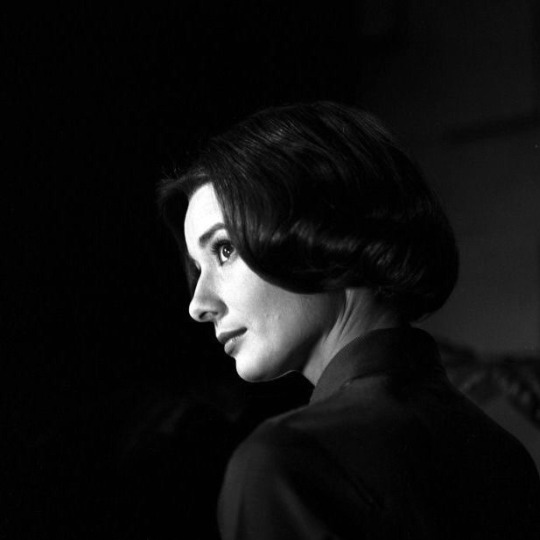
AUDREY HEPBURN
Audrey Kathleen Hepburn (née Ruston; 4 May 1929 – 20 January 1993) was a British actress. Recognized as a film and fashion icon, she was ranked by the American Film Institute as the third-greatest female screen legend from the Classical Hollywood cinema and was inducted into the International Best Dressed Hall of Fame List.
Born into an aristocratic family in Ixelles, Brussels, Hepburn spent parts of her childhood in Belgium, England and the Netherlands. She attended boarding school in Kent, England from 1936 to 1939. With the outbreak of World War II, she returned to the Netherlands. During the war, Hepburn studied ballet at the Arnhem Conservatory and by 1944, she performed ballet to raise money to support the Dutch resistance. Hepburn studied ballet with Sonia Gaskell in Amsterdam beginning in 1945 and with Marie Rambert in London from 1948. She began performing as a chorus girl in West End musical theatre productions and then had minor appearances in several films. Hepburn rose to stardom in the romantic comedy Roman Holiday (1953) alongside Gregory Peck, for which she was the first actress to win an Oscar, a Golden Globe Award, and a BAFTA Award for a single performance. That year, she also won a Tony Award for Best Lead Actress in a Play for her performance in Ondine.
Hepburn went on to star in a number of successful films such as Sabrina (1954), in which Humphrey Bogart and William Holden compete for her affection; Funny Face (1957), a musical in which she sang her own parts; the drama The Nun's Story (1959); the romantic comedy Breakfast at Tiffany's (1961); the thriller-romance Charade (1963), opposite Cary Grant; and the musical My Fair Lady (1964). In 1967, she starred in the thriller Wait Until Dark, receiving Academy Award, Golden Globe and BAFTA nominations. After that, Hepburn only occasionally appeared in films, one being Robin and Marian (1976) with Sean Connery. Her last recorded performances were in the 1990 documentary television series Gardens of the World with Audrey Hepburn, for which she won a Primetime Emmy Award for Outstanding Individual Achievement – Informational Programming. In 1994, Hepburn's contributions to a spoken-word recording titled Audrey Hepburn's Enchanted Tales earned her a posthumous Grammy Award for Best Spoken Word Album for Children. She stands as one of few entertainers who have won Academy, Emmy, Grammy and Tony Awards.
Hepburn won three BAFTA Awards for Best British Actress in a Leading Role. In recognition of her film career, she received BAFTA's Lifetime Achievement Award, the Golden Globe Cecil B. DeMille Award, the Screen Actors Guild Life Achievement Award and the Special Tony Award. Later in life, Hepburn devoted much of her time to UNICEF, to which she had contributed since 1954. Between 1988 and 1992, she worked in some of the poorest communities of Africa, South America and Asia. In December 1992, Hepburn received the US Presidential Medal of Freedom in recognition of her work as a UNICEF Goodwill Ambassador. A month later, she died of appendiceal cancer at her home in Tolochenaz, Vaud, Switzerland at the age of 63
11 notes
·
View notes
Text




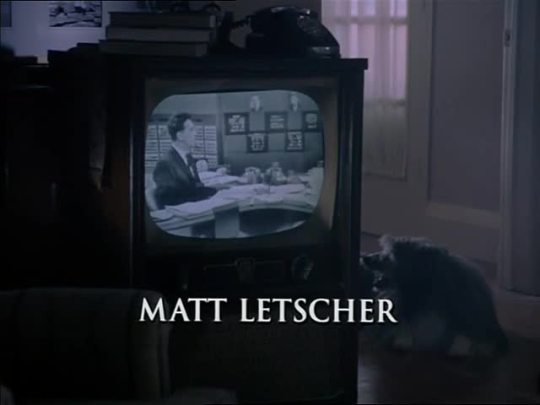
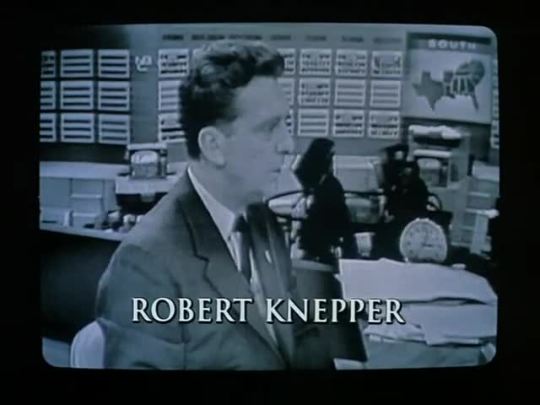
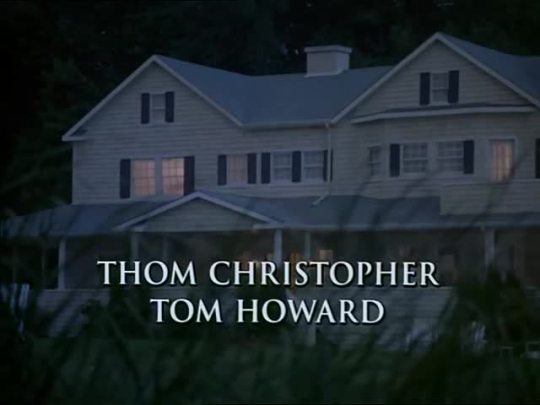



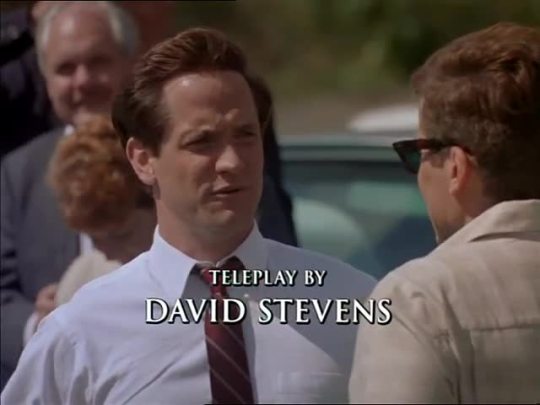

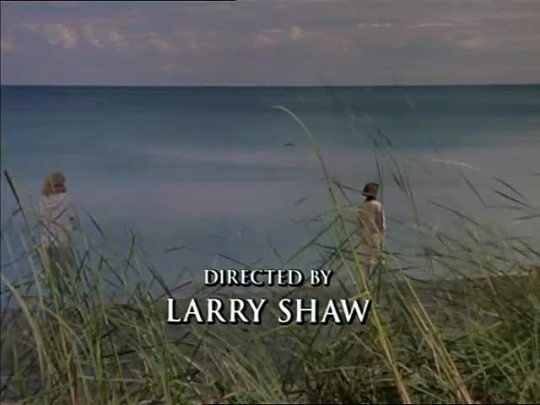

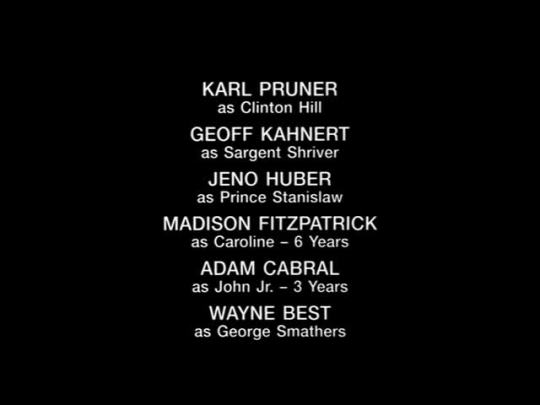
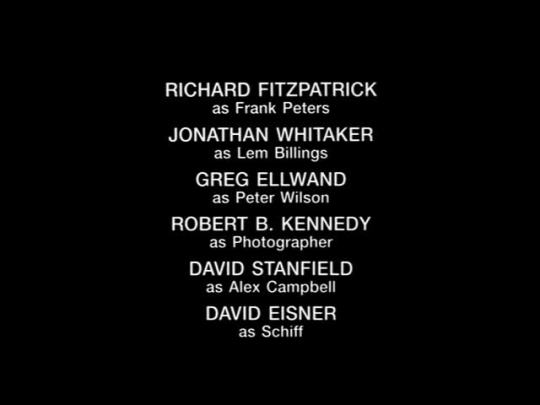






Jackie Ethel Joan: The Women of Camelot - NBC - March 4-5, 2001
Biographical Drama (2 episodes)
Running Time: 163 Minutes Total
Stars:
Jill Hennessy as Jackie Bouvier Kennedy
Lauren Holly as Ethel Skakel Kennedy
Leslie Stefanson as Joan Bennett Kennedy
Daniel Hugh Kelly as John F. Kennedy
Robert Knepper as Robert F. Kennedy
Matt Letscher as Ted Kennedy
Harve Presnell as Joseph P. Kennedy Sr.
Charmion King as Rose Kennedy
Wayne Best as George Smathers
Walker Boone as Steve Clark
Christopher Britton as Ted's Doctor
Catherine Bruce as Sister Mary Leo
Adam Cabral as John F. Kennedy Jr.
Thom Christopher as Aristotle Onassis
William Colgate as Richard Nixon
Beau Dunker as Ted Kennedy Jr.
David Eisner as Schiff
Greg Ellwand as Peter Wilson
Madison Fitzpatrick as Caroline Kennedy
Richard Fitzpatrick as Frank Peters
Linda Goranson as Lady Bird Johnson
Paul Thomas Gordon as Peter Lawford
Kate Hemblen as Joan's Nanny
Shannon Hile as Elaine Mitchell
Tom Howard as Lyndon B. Johnson
Jeno Huber as Prince Stanisław Albrecht Radziwiłł
Jamie Johnston as Young Patrick Kennedy
Geoff Kahnert as Sargent Shriver
Ray Kahnert Bobby's Priest
Tamsin Kelsey as Eunice Kennedy Shriver
Anne L'Espérance as Cathy
Sarah Lafleur as Marilyn Monroe
Shawn Lawrence as Alex Carter
Gene Mack as Rosey Grier
Louisa Martin as Maude Shaw
Kaya McGregor as Pat Kennedy
Nicole Michaux as Jean Ann Smith
Julia Pagel as Kathleen Kennedy
Rosemary Pate as Kara
Karl Pruner as Clinton Hill
Matt Sadowski as Joseph P. Kennedy II
Jeffrey Smith as Jim Ketchum
Joy Tanner as Lee Bouvier
Bruce Vavrina as Roger Mudd
Jonathan Whittaker as Lem Billings
Brad Wietersen as Stephen Edward Smith
#Jackie Ethel Joan: The Women of Camelot#TV#Biographical Drama#2000's#2001#NBC#Jill Hennessy#Lauren Holly#Leslie Stefanson#Daniel Hugh Kelly#Robert Knepper#Matt Lescher#Harve Presnell#Charmion King
10 notes
·
View notes
Text
This post is a continuation of my introduction to the heritage house museum that I work at (enjoy).

In my last post, I gave a very broad overview of Point Ellice House, but I want to spend some time on this post introducing you to the O’Reilly family. They lived at PEH between 1867 and 1975 (which equates to 108 years, and three generations of family). The first generation to call this place home were Peter and Caroline O’Reilly.
Peter O’Reilly emigrated from Ireland in 1859. He was an avid diarist, and thanks to his consistent record keeping we know about everything from house repairs and the payment of household staff, to details about his work and travels across British Columbia. Peter held a number of colonial government positions including that of Judge and Gold Commissioner, but his most prominent role was as Indian Reserve Commissioner. Over the course of the 18 years he held this position, he was responsible for the allotment of reserve lands to the various First Nations of British Columbia. The land reserves that he staked out in the 1880’s and 1890’s are intact today and his diaries and papers are often used in ongoing land disputes between the various indigenous nations and the Government of British Columbia.
He married Caroline Trutch in 1863. If you are at all familiar with the history of BC, you know that the name “Trutch” is quite loaded for a number of reasons, primarily due to the infamy of Caroline's brother, Joseph Trutch (Lieutenant Governor, and generally Bad Guy).
Peter and Caroline would have 4 children: Frank, Kathleen, Mary, and Jack. Unfortunately, Mary did not live past her 7th birthday, but the other three siblings would live at Point Ellice House until their deaths.
As part of our mission statement and overall goals with Point Ellice House, we do not shy away from the unsavoury side of the history. There are many interpretive panels throughout the house that seek to inform visitors of the history of the land they stand on, as well as the origins of the O’Reilly’s wealth. We discuss the tea, roses, and romance of the 19th century, but we also do not sugarcoat how these colonial settlers lived or how they came by their lives of luxury.
If you enjoy these posts, I also have a Youtube channel where I chat “in person” about niche historical topics and museums. If you enjoy my content, you can buy me a ko-fi or join one of my membership tiers (which have some juicy perks!). Thank you for joining the adventure!
#history#canadian history#british columbia#indian reserve commission#point ellice house#archaeology#museum#house museum#heritage house#victorian era
42 notes
·
View notes
Text
Monday edit for missing kids and kids died from murder Kim Rae Doss, Tracy Anne King, Gina Dawn Brooks, Mikelle Diane Biggs, Joan Gay Croft, Teekah Latres Lewis, Moira McCall Anderson, Rachel Marie Anderson, Monica Arellano, Amber Nicole Crum, Victor Arellano, Anastacia Marie Argentova-Stevens, Allyson Kathleen Dalton, Athena Sheetz, Thanit Sheetz-Marti, Emily Maria Izykowski, Haleigh Breann Culwell, Bianca Elaine Lebron, Russell "Russie" John Mort, Alexis S. Patterson, Beverly Rose Potts, Jenna Ray Robbins, Rachael Marie Runyan, Eliška “Elsie” Paroubek, Harmony Renee Montgomery, Reachelle Marie Smith, Danyel Lou Sparpana, Brandi Jondell Summers& TIFFANI WISE, Omar Vargas, Darko Stančević, Linda Jane Stillwell, Kimberly Alizee Torres Rodriguez, Vivian Aileen Trout, Rebecca Elizabeth West, Sophia Anabel Larranaga, Fabricio Herman Barajas, Serina "Seri" Victoria Clark, Tammy Alexandra Flores, Diego Flores, Acacia Nicole Duvall,Jon "JP" Pierre Duvall, Sarah Arielle Skiba, Lisa Mae Zaharias,Christopher Zaharias, Azaria Chantel Loren Chamberlain, Tricia J. Kellett, Amy Burney, Diana Belinda Alvarez, Trudy Leann Appleby, Isabella Balajonda-Annibal, Lysbet Balmontez-Fernandez, Jersey Arnett, Carol May Big Tobacco, Karen Lynn Tompkins, Ricky Jean "Jeannie" Bryant, Lorie Lynn Lewis, Ann Marie Burr, Mary Louise Day, Patricia Louise "Patti Lou" Zentner, Athena Strand, Amber Hagerman, Christine Jessop, Debbie Randall, Jessica Gutierrez, Michaela Joy Garecht, Joan D’Alessandro, Cherish Perrywinkle, Audrii Cunningham, April Tinsley, Asifa Bano, JonBenét Ramsey, Elizabeth Shelley, Sharon Lee Gallegos, Sarah H. Foxwell, Opal Jo Dace Jennings,
3 notes
·
View notes
Text

Rosemary, Pat, Eunice and Kick in 1928.
#Rosemary Kennedy#Rose Marie Kennedy#Patricia Kennedy#Patricia Kennedy Lawford#Eunice Kennedy#Eunice Kennedy Shriver#Kathleen Kennedy#Kathleen Kennedy Cavendish
13 notes
·
View notes
Text
2023 reading wrap-up for fun :)
WHAT I READ (NO PARTICULAR ORDER):
Red White and Royal Blue by Casey McQuiston
Renegades by Marissa Meyer
Arch-Enemies by Marissa Meyer
Super Nova by Marissa Meyer
Skyhunter by Marie Lu
Steelstriker by Marie Lu
Heartstopper 1-4 by Alice Oseman
Never Kiss Your Roomate by Philine Harms
The Girl From the Sea by Molly Knox Ostertag
Kiss Her Once For Me by Alison Cochrun
Girls of Paper and Fire by Natasha Ngan
Grown by Tiffany D Jackson
The Weight of Blood by Tiffany D Jackson
We Hunt the Flame by Hafsah Faizal
We Free the Stars by Hafsah Faizal
Love and Pompoms by Crystal Frasier, Val Wise, and Oscar O. Jupiter
House of Hollow by Krystal Sutherland
Gender Queer by Maia Kobabe
Garden Alchemy by Stephanie Rose
This Woven Kingdom by Tahereh Mafi
These Infinite Threads by Tahereh Mafi
Ace of Spades by Faridah Abike-Iyimide
The Silence of the Girls by Pat Barker
A Wilderness of Stars by Shea Ernshaw
Written in the Stars by Alexandria Bellefluer
The Book Thief by Mark Zusak
Daughter of the Moon Goddess by Sue Lynn Tan
She Drives Me Crazy by Kelly Quindlen
Red Queen by Victoria Aveyard
Glass Sword by Victoria Aveyard
Kings Cage by Victoria Aveyard
War Storm by Victoria Aveyard
The Sprite and the Gardener by Rii Abrego and Joe Whitt
The Perks of Being a Wallflower by Stephen Chbosky
The Midnight Library by Matt Haig
A Beginners Guide to Tarot by Kathleen Olmstead
The Handmaids Tale by Margaret Atwood
The Testaments by Margaret Atwood
She is a Haunting by Trang Thanh Tran
The Lost Hero by Rick Riordan
Queen Among the Dead by Lesley Livingston
Throwaway Girls by Andrea Contos
Radio Silence by Alice Oseman
The Cruel Prince by Holly Black
The Wicked King by Holly Black
RE-READS:
The Renegades Trilogy by Marissa Meyer
She Drives Me Crazy by Kelly Quindlen
FAVORITES:
Radio Silence by Alice Oseman
The Cruel Prince by Holly Black
Skyhunter by Marie Lu
5 notes
·
View notes
Text
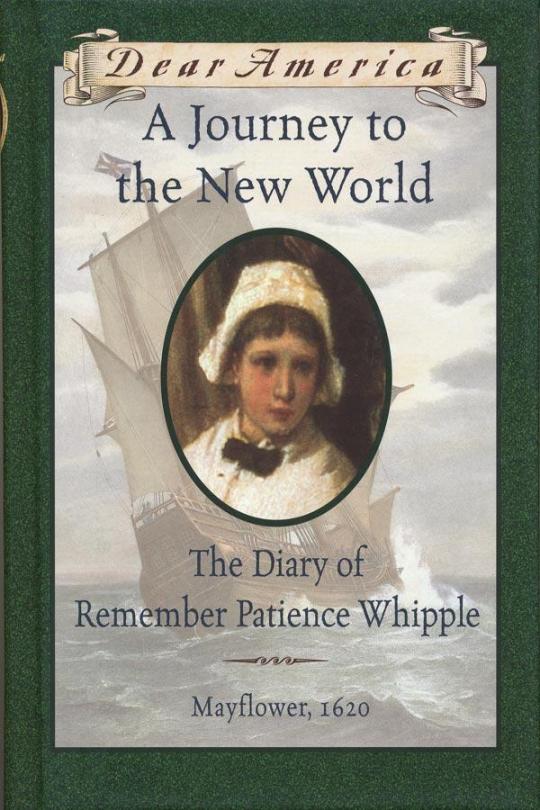
Series info...
Book one in the Dear America series
A Journey to the New World
The Winter of Red Snow: The Revolutionary War Diary of Abigail Jane Stewart, Valley Forge, Pennsylvania, 1777 by Kristiana Gregory
When Will This Cruel War Be Over?: The Civil War Diary of Emma Simpson, Gordonsville, Virginia, 1864 by Barry Denenberg
A Picture of Freedom: The Diary of Clotee, a Slave Girl, Belmont Plantation, Virginia, 1859 by Patricia McKissack
Across the Wide and Lonesome Prairie: The Oregon Trail Diary of Hattie Campbell, 1847 by Kristiana Gregory
So Far from Home: The Diary of Mary Driscoll, an Irish Mill Girl, Lowell, Massachusetts, 1847 by Barry Denenberg
I Thought My Soul Would Rise and Fly: The Diary of Patsy, a Freed Girl, Mars Bluff, South Carolina, 1865 by Joyce Hansen
West to a Land of Plenty: The Diary of Teresa Angelino Viscardi, New York to Idaho Territory, 1883 by Jim Murphy
Dreams in the Golden Country: The Diary of Zipporah Feldman, a Jewish Immigrant Girl, New York City, 1903 by Kathryn Lasky
Standing in the Light: The Captive Diary of Catharine Carey Logan, Delaware Valley, Pennsylvania, 1763 by Mary Pope Osborne
Voyage on the Great Titanic: The Diary of Margaret Ann Brady, RMS Titanic, 1912 by Ellen Emerson White
A Line in the Sand: The Alamo Diary of Lucinda Lawrence, Gonzales, Texas, 1836 by Sherry Garland
My Heart Is on the Ground: The Diary of Nannie Little Rose, a Sioux Girl, Carlisle Indian School, Pennsylvania, 1880 by Ann Rinaldi
The Great Railroad Race: The Diary of Libby West, Utah Territory, 1868 by Kristiana Gregory
A Light in the Storm: The Civil War Diary of Amelia Martin, Fenwick Island, Delaware, 1861 by Karen Hesse
The Girl Who Chased Away Sorrow: The Diary of Sarah Nita, a Navajo Girl, New Mexico, 1864 by Ann Turner
A Coal Miner's Bride: The Diary of Anetka Kaminska, Lattimer, Pennsylvania, 1896 by Susan Campbell Bartoletti
Color Me Dark: The Diary of Nellie Lee Love, the Great Migration North, Chicago, Illinois, 1919 by Patricia McKissack
One Eye Laughing, the Other Weeping: The Diary of Julie Weiss, Vienna, Austria to New York, 1938 by Barry Denenberg
My Secret War: The World War II Diary of Madeline Beck, Long Island, New York, 1941 by Mary Pope Osborne
Valley of the Moon: The Diary Of Maria Rosalia de Milagros, Sonoma Valley, Alta California, 1846 by Sherry Garland
Seeds of Hope: The Gold Rush Diary of Susanna Fairchild, California Territory, 1849 by Kristiana Gregory
Christmas After All: The Great Depression Diary of Minnie Swift, Indianapolis, Indiana, 1932 by Kathryn Lasky
Early Sunday Morning: The Pearl Harbor Diary of Amber Billows, Hawaii, 1941 by Barry Denenberg
My Face to the Wind: The Diary of Sarah Jane Price, a Prairie Teacher, Broken Bow, Nebraska, 1881 by Jim Murphy
Where Have All the Flowers Gone? The Diary of Molly MacKenzie Flaherty, Boston, Massachusetts, 1968 by Ellen Emerson White
A Time for Courage: The Suffragette Diary of Kathleen Bowen, Washington, D.C., 1917 by Kathryn Lasky
Mirror, Mirror on the Wall: The Diary of Bess Brennan, Perkins School for the Blind, 1932 by Barry Denenberg
Survival in the Storm: The Dust Bowl Diary of Grace Edwards, Dalhart, Texas, 1935 by Katelan Janke
When Christmas Comes Again: The World War I Diary of Simone Spencer, New York City to the Western Front, 1917 by Beth Seidel Levine
Land of the Buffalo Bones: The Diary of Mary Ann Elizabeth Rodgers, an English Girl in Minnesota, New Yeovil, Minnesota, 1873 by Marion Dane Bauer
Love Thy Neighbor: The Tory Diary of Prudence Emerson, Green Marsh, Massachusetts, 1774 by Ann Turner
All the Stars in the Sky: The Santa Fe Trail Diary of Florrie Mack Ryder, The Santa Fe Trail, 1848 by Megan McDonald
Look to the Hills: The Diary of Lozette Moreau, a French Slave Girl, New York Colony, 1763 by Patricia McKissack
I Walk in Dread: The Diary of Deliverance Trembley, Witness to the Salem Witch Trials, Massachusetts Bay Colony, 1691 by Lisa Rowe Fraustino
Hear My Sorrow: The Diary of Angela Denoto, a Shirtwaist Worker, New York City, 1909 by Deborah Hopkinson
The Fences Between Us: The Diary of Piper Davis, Seattle, Washington, 1941 by Kirby Larson
Like the Willow Tree: The Diary of Lydia Amelia Pierce, Portland, Maine, 1918 by Lois Lowry
Cannons at Dawn: The Second Diary of Abigail Jane Stewart, Valley Forge, Pennsylvania, 1779 by Kristiana Gregory
With the Might of Angels: The Diary of Dawnie Rae Johnson, Hadley, Virginia, 1954 by Andrea Davis Pinkney
Behind the Masks: The Diary of Angeline Reddy, Bodie, California, 1880 by Susan Patron
A City Tossed and Broken: The Diary of Minnie Bonner, San Francisco, California, 1906 by Judy Blundell
Down the Rabbit Hole: The Diary of Pringle Rose, Chicago, Illinois, 1871 by Susan Campbell Bartoletti
2 notes
·
View notes
Text
Barbie Battle 14: Kids Part 1
Sorry Gina, Rita, and Sofia are grouped together when none of the other triplets are; I forgot about them until the last minute

Kathleen (Twelve Dancing Princesses) vs Isla (Twelve Dancing Princesses)
Peppermint Girl (Nutcracker) vs Emily Willows (Princess Charm School)
Brian (Perfect Christmas) vs Gingerbread Boy (Nutcracker)
The Destinies (Mermaid Tale) vs Melody (Rapunzel)
Albain (Pony Tale) vs Tommy (Rapunzel)
Violet (Thumbelina) vs the Sea Butterfly (Mermaidia)
Katrina (Rapunzel) vs Gina, Rita, and Sofia (Island Princess)
Janessa (Twelve Dancing Princesses) vs Jonas (Pony Tale)
Lorena (Rapunzel) vs Lilac (Magic of the Pegasus)
Lacey (Twelve Dancing Princesses) vs Tommy (Nutcracker)
Max (Pony Tale) vs Tammy (Christmas Carol)
Rose (Magic of the Pegasus) vs Merfairies (Mermaidia)
Marie (Pony Tale) vs Meredith (Princess and the Popstar)
Blush (Magic of the Pegasus) vs Ashlyn (Thumbelina)
Makenna (Thumbelina) vs Theo (Pony Tale)
Trevi (Princess and the Popstar) vs Hadley (Twelve Dancing Princesses)
11 notes
·
View notes